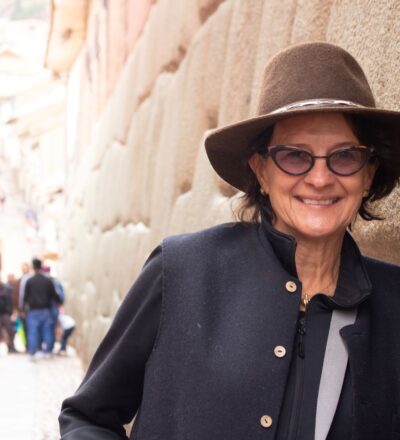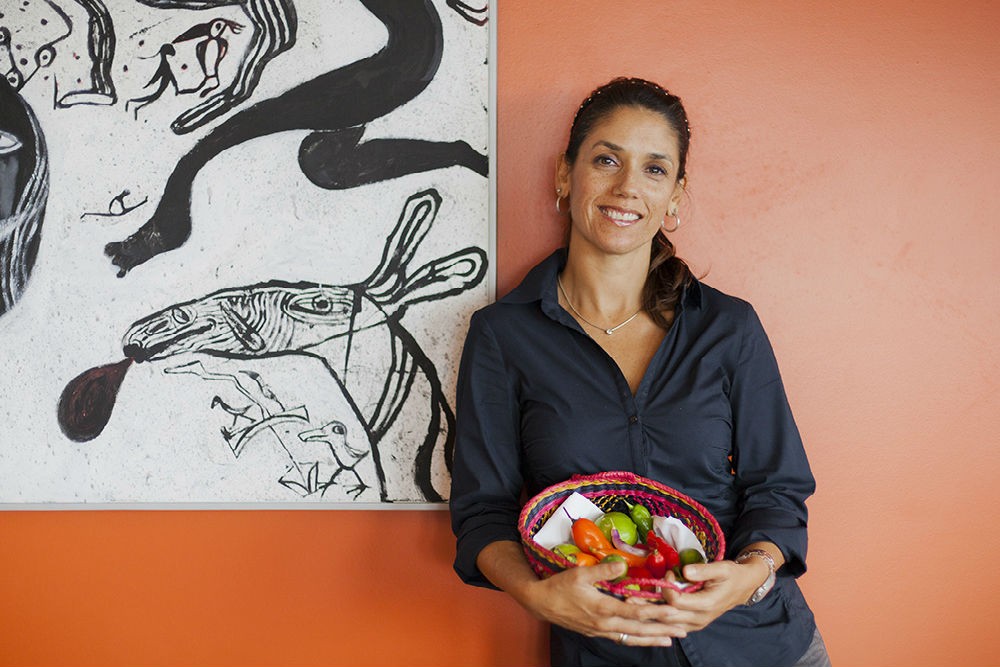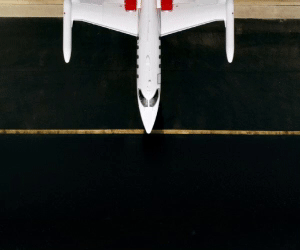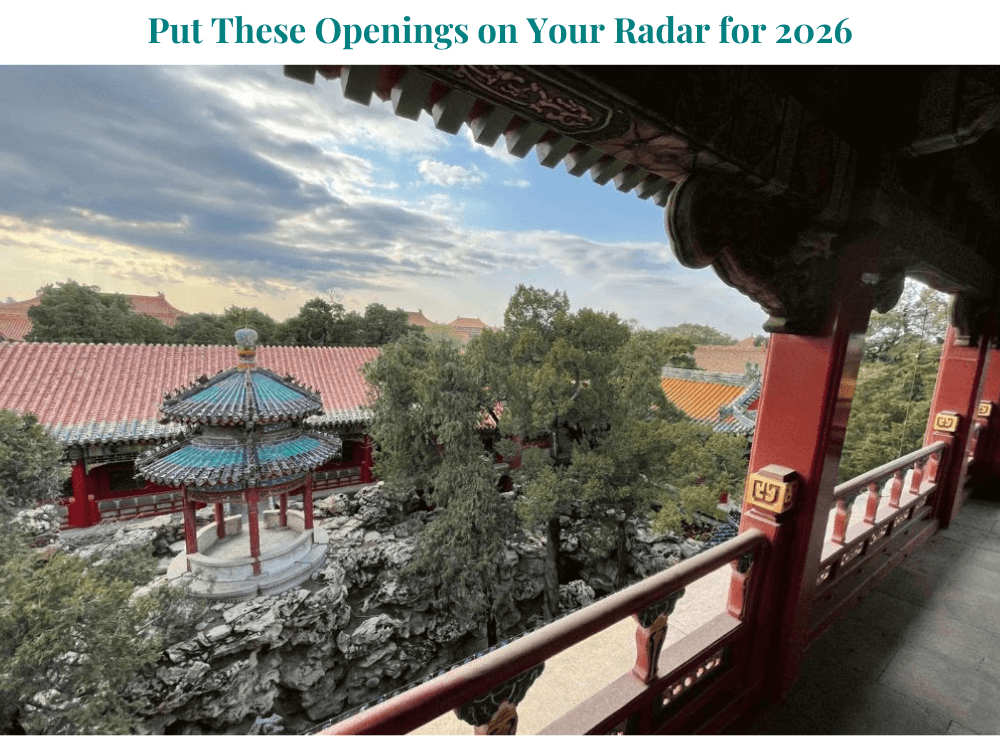Peru for Food Lovers: Insider’s Guide to the Best Local Flavors
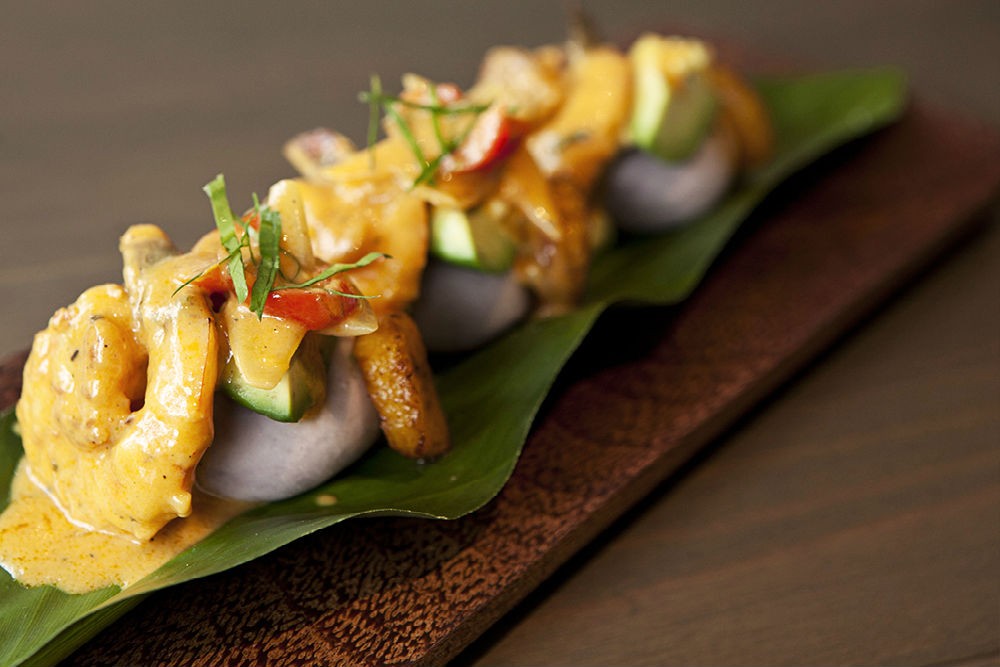 Peru is a hotspot for culinary experimentation; this is a riff on a traditional dish, causa. Photo: ámaZ
Peru is a hotspot for culinary experimentation; this is a riff on a traditional dish, causa. Photo: ámaZ
The insider advice on this page is from one of Wendy’s Trusted Travel Experts for Peru and Bolivia: Marisol Mosquera of Aracari.
A native Peruvian, Marisol chucked a career in the financial world to become a pioneer in experiential travel to Peru and Bolivia; she also plans trips that combine the Galapagos with either country. She and trusted colleague Mark Green—a Brit who guided trips in South America for many years and is now living in Lima and married to a Peruvian—work with a network of prominent historians, photographers, chefs, museum directors, and fashion designers to deliver privileged access to people and places throughout the region. They are used to working with high-powered businesspeople for whom seamless execution is a prerequisite, but sustainability is also part of their bottom line; Marisol seeks out experiences that enhance the lives of locals, and she’s a strong supporter of woman-owned enterprises. Call on Marisol if you want an out-of-the-box version of the region’s iconic sites—a private tented camp in the rainforest, or tips for avoiding the lines at Machu Picchu—or if you want to explore the hidden pockets that most travelers miss, from the oldest city in the Americas to a little-known protected reserve next to Bolivia’s Uyuni salt flats.
Where to Stay and Eat
Best bang-for-your-buck hotel
Located in the heart of Barranco—Lima’s bohemian neighborhood—the charming Villa Barranco immerses guests in the city’s art and cultural scene. Inside this carefully restored 1920s republican home are nine spacious rooms, each with a private garden, patio, or balcony. The rooftop terrace is perfectly positioned for views over the coastal promenade, and hip art galleries like Mario Testino’s MATE are a stroll away. (You can have your own private slice of this rooftop vista if you book the split-level master suite.)
Restaurants the locals love
Set in a converted house in Barranco, Isolina is a modern tavern that recreates simple and seasonal Spanish and African-influenced criollo dishes as they would traditionally be prepared at home. Expect tapas like pejerrey, and hearty plates like meaty estofados that serve at least two. They don’t take reservations, but the weekend queue is worth the wait.
Sonia, in Lima’s Chorrillos neighborhood, draws a lunchtime crowd with live music, great seafood, and the jovial presence of Sonia and her fisherman husband, Freddy. Order chupe de camarones or chupe de langostinos, a delicious seafood soup with river or sea shrimp.
In Cusco, La Feria offers traditional Peruvian fare in an upmarket version of a typical picantería (a cheap, simple lunchtime restaurant). Portions of classic dishes from across the country are generously sized and can be washed down with a glass of chicha. Perfectly positioned on the Plaza de Armas, the restaurant’s balcony has great views over the heart of the historic city center.
Meals worth the splurge (and the wait)
The full tasting menu at Central—which earned the top spot on the World’s 50 Best Restaurants in 2023—presents 17 molecular dishes structured around native ingredients from different altitudes. Advanced booking is absolutely essential at this flagship restaurant of Chef Virgilio Martínez Véliz, who is famed for his contemporary creations that have helped firmly place Peruvian cuisine on the gourmet dining map.
Currently sitting atop the World’s 50 Best Restaurants list and serving up Japanese-Peruvian “Nikkei” fusion cuisine (a style inspired by the wave of Japanese immigration to Peru), Maido also has an excellent tasting menu, as well as an à la carte menu and a sushi bar. This modern restaurant, run by innovative chef Mitsuharu Tsumura, gives a nod to minimalist aesthetics, and offers private rooms and lounges.
Osaka also puts out innovative Nikkei fare, an ever-growing facet of Peru’s culinary scene, with a first-class sushi bar. Osaka’s success has since extended across South America, with sister restaurants in Sao Paolo and Buenos Aires.
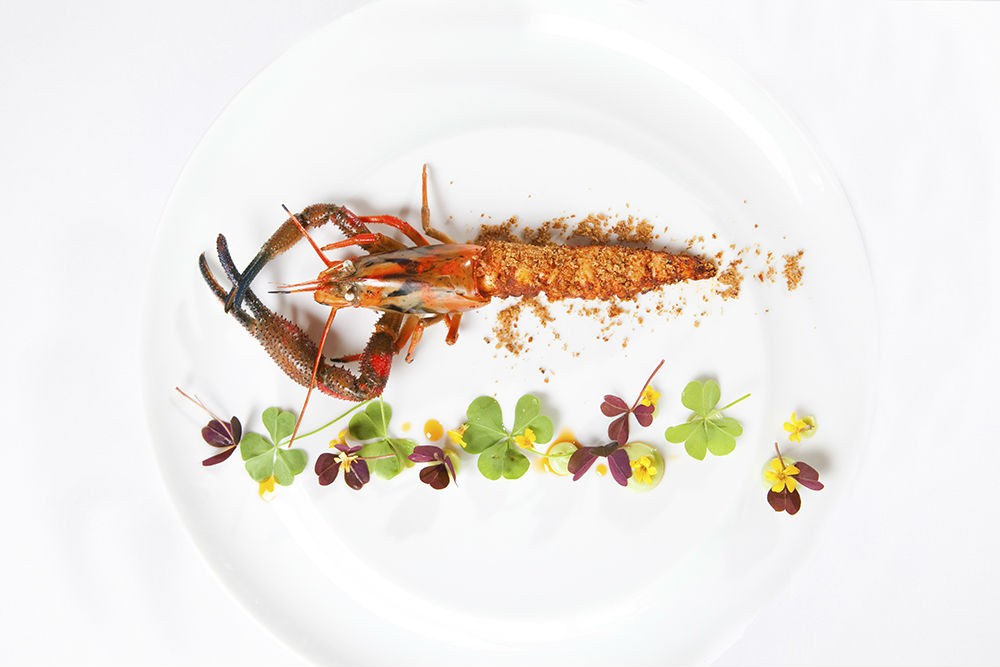
River shrimp at Central restaurant, Lima. Photo: Central
Dish to try
Ceviche, in any form. The traditional dish consists of whitefish, usually sole or sea bass, marinated in fresh lime and chiles and served with corn and sweet potato on the side. Seafood such as octopus, squid, or steamed prawns sometimes substitutes for the fish. For something a little different, try the cooked ceviche at La Gloria, the Amazonian ceviche with plantains at ámaZ, or the ceviche maki rolls at Osaka or Maido.
Desserts to try
Peruvians love sweets, and there are lots to choose from. Especially popular are suspiro limeño de chirimoya, a rich fruit mousse topped with a fluffy cream, and picarones, deep-fried rings of sweet potato and cinnamon dough dribbled in miel de chancaca sugar syrup.
Drink to try
It’s hard to spend time in Peru without trying pisco, the country’s national liquor that has been an integral element to Peruvian life and culture for more than 400 years. This brandy is produced from eight varieties of pisco grapes, and can be enjoyed straight or used in cocktails. A refreshing chilcano mixes it with ginger ale, while the similarly ubiquitous pisco sour is made using egg whites. For serious sampling, head to the oldest winery in South America, Hacienda Tacama, located in Peru’s grape-growing region of Ica, 300 kilometers south of Lima. Marisol can arrange exclusive wine and pisco tasting sessions in the private cellar.
What to See and Do
Don’t miss
The Incas mastered agriculture in the Sacred Valley and cultivated a range of food crops that were vital to their survival and expansion. Today choclo (giant corn) can be seen growing alongside some of Peru’s 4,000 varieties of potatos and colorful fields of kiwicha and quinoa. The Sacred Valley is also bursting with adventure activities; Marisol can arrange hiking, biking, kayaking, rafting, zip-lining and more.
The charming El Albergue hotel, next to the train station in the historic town of Ollantaytambo in the Sacred Valley, has established its own organic farm, where an assortment of vegetables, potatoes (a food indigenous to Peru), corn, and quinoa are grown without chemical fertilizers or pesticides. The farm is situated in the midst of Inca terracing, with views of snow-capped Mount Veronica and the Ollantaytambo ruins. Marisol can organize a tour that includes a hands-on lesson in making uchucuta sauce using a grinding stone; or a pachamanca, a traditional meal of locally and organically sourced meats, potatoes, and vegetables cooked underground with wood-fired stones.
Northern Peru has its own beauty and, not surprisingly, its own cuisine. Here you’ll find golden sand beaches in Mancora, majestic peaks, pre-Inca ruins, waterfalls nestled in the cloud forest of Chachapoyas—and a respite from the crowds at the more popular southern destinations. Duck with green rice is a norteño specialty; try it at Fiesta Chiclayo Gourmet in Chiclayo, along Peru’s Moche Route.
The journey
South America’s first sleeper train, the Belmond Andean Explorer, connects Cusco, Lake Titicaca, and Arequipa in unquestionable style and comfort. This luxurious voyage passes through sweeping landscapes otherwise unreachable in Peru’s southern highlands. Hop off early in the Colca Canyon to spot the famous condors and relax in natural hot-spring baths before visiting the city of Arequipa, built with white volcanic stone. The must-try dish in Arequipa is rocto relleno: a spicy pepper stuffed with seasoned beef and tomato sauce, topped with queso fresco, and served with a hearty portion of sliced potatoes.
The detour
The Cerveceria del Valle brewery in the Sacred Valley, on the way to Machu Picchu. Peru’s craft-beer scene has exploded over the past few years. Cerveceria produces delicious IPAs, porters, pale ales, and other brews found in bars in the valley and in Cusco; Marisol can organize a guided tour with the owner.
Best culinary experiences
A sampling food tour of Lima. In this epicenter of gastronomy, you’ll find an array of colorful dishes inspired by the country’s dramatically diverse geography, rich ethnic makeup, and long culinary history. Step inside local markets, traditional bodegas, and artisan eateries that produce some of Peru’s best edible creations. In Cusco, stops include food stalls selling tamales, and the more adventurous can try guinea pig and anticuchos (beef-heart skewers).
Join chef Ignacio Barrios at a local market in Lima, where he will introduce you to a variety of exotic fruits, vegetables, and street food. Afterward, Ignacio will take you back to his professional kitchen—set inside a lovely early-20th-century traditional house—where he’ll explain the history of Peruvian gastronomy while guiding you through a private cooking class. Enjoy a refreshing chilcano (see “Drink to Try,” above) as you prepare and savor seasonal Peruvian dishes, tailored to your preferences. Conclude the experience with dessert featuring market-sourced fruits.
Best Times to Go
April to October is the dry season in Cusco and the Peruvian highlands; the landscape is greenest in April and May, just after the rains. High season coincides with the European and North American summer, so to avoid crowds, come in the spring or fall months.
That said, Peru is a year-round destination for gourmands, its markets bursting with tropical fruit (much of it virtually unknown to North Americans) no matter the season. Depending on when you come, you might be treated to fresh aguaje, aguaymanto (gooseberry), cherimoya, tumbo, lucuma, granadilla, maracuyá (passion fruit), camu camu, or pepino.
Worst Times to Go
February is the height of the rainy season in both the Andes and the rain forest, though it is still possible to visit Peru’s key attractions. The only exception is the Inca Trail, which closes for the month.
It may sound tempting to visit for the Mistura food festival, which takes place in Lima every September, but don’t plan your trip around it. This popular showcase for dishes from the country’s top restaurants is seriously overcrowded and chaotic, and there is no way to avoid the long lines.
Biggest Rookie Mistakes
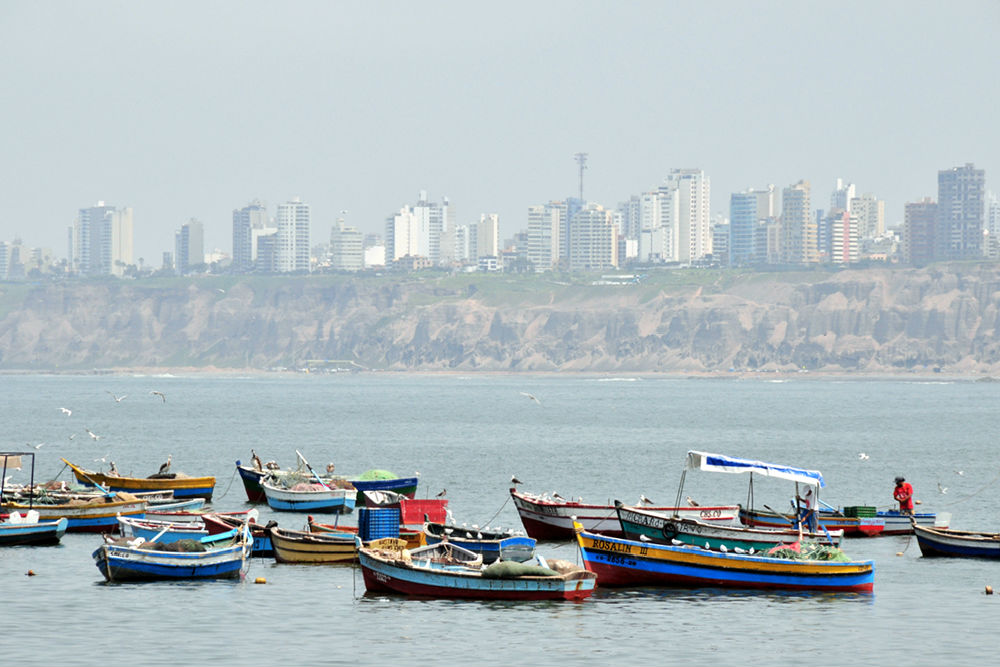
Not giving Lima enough time—or, worse yet, skipping the capital city entirely. A colorful mix of cultures and ethnic groups, from descendents of pre-Hispanic civilizations to Asian and European immigrants, Lima is the epicenter of the recent explosion of Peruvian cuisine onto the world stage. Marisol can arrange a market visit accompanied by one of the city’s star chefs, Penelope Alzamora, which makes for a great introduction to Peruvian cuisine.
Not venturing beyond the pisco sour. There are all sorts of delicious cocktails based on pisco, Peru’s national spirit. Marisol can organize a cocktail demonstration and tasting session at a top bar like Malabar or ámaZ, the latter of which specializes in drinks based on Amazonian fruits.
Tipping Tip
Though not customary in local restaurants, tipping has become common in cities such as Lima, where a 10 percent gratuity is the norm.
Airport Intel
If you arrange for Marisol’s VIP airport service, someone will meet you at the aircraft and, skipping the main terminals, escort you to a quiet lounge where you can await your luggage as your customs form is filled out for you. The representative will then guide you through customs, bypassing all other passengers, and to your car for private transfer to your Lima hotel.
Instagram Moment
A dinner cruise on the Amazon at sunset, with colors ranging from deep purple to brilliant orange. In general, luxury lines such as Delfin Amazon Cruises and Aqua Expeditions serve excellent food; Pedro Miguel Schiaffino, of ámaZ and Malabar, created the menus for the Aqua ships.
The Souvenir
A bottle of Cuatro Gallos pisco (see “Drink to try”).

